
Like a mutating beast, New York’s ever-evolving. And the art scene’s no different.
With the opening of the new New Museum on the Bowery, our Lower East Side’s again becoming an epicenter for urban artistic activity. Gallerists Dennis Christie and Ken Tyburski couldn’t resist the pull and recently unveiled their DCKT Contemporary’s new location just down the famed road from the Museum.
In celebration of the event, 35-year old Christie recently sat down with Queerty contributor Justin Conner to discuss his artistic roots, how to late Andy Warhol pulled him to the city and why he ignores the market’s boom, even if it could go bust.
Check it out, after the jump.
Justin Conner: I think it’s interesting how you’ve chosen this space on the Lower East Side, which is becoming a second center of the New York City art world, after Chelsea.
Dennis Christie: Yeah, well we’ll see about that.
Conner: Well, a lot more galleries are coming here.
Christie: Yes, definitely. There are about 40 of us down here now. What is appealing is the New Museum having opened. Having a building means they are here for the long haul. It’s a great beacon for the galleries and the neighborhood, and for us newcomers. We’re really psyched about the location since we’re only a half a block away.
Conner: Where was your gallery located originally?
Christie: I started the gallery with Ken Tyburski, my business partner, while I was working for Charles Cowles gallery. We started our gallery within that space. It was an independently run space that I oversaw while I was directing Charles Cowles. We were exhibiting in a 20 by 20 foot room. We took over the programming brought in our own artists did everything for that space. Had our name on the door and all of that. Then, we lucked out and got a space on 24th street. We were there another 2 years until the building was torn down. After that, we were looking for the right space for a really long time not finding anything in Chelsea, and dealing with nightmare potential landlords. Nothing felt right until we found this space.
Conner: So you started in the gallery world under the great Charles Cowles?
Christie: I worked for Charlie for about 9 years I started as an intern and he was really my number one mentor. I went from intern to director.
Conner: What made you want to start your own gallery?
Christie: There were a lot of artists outside of the gallery that I wanted to work with–younger artists, people who had never shown in New York and those with less-established track record. We started our programming looking outside New York as much as possible. Though we have some New York-based artists, a lot of them are from California, Texas, and the Midwest.

[David Lefkowitz’s Block, from 2005.]
Conner: Do you search for anything in particular when choosing artists? What are you drawn artistically?
Christie: I think overall it has a harder photographically- based edge. It snaps into place quickly visually, though maybe much more layered and conceptually.
Conner: Do you collect?
Christie: I certainly collect my own artists. And when the fancy strikes me something else.
Conner: Are you drawn to art that has gay themes?
Christie: One of the artists that we show, Maria Piñeres, shows these great eroticized works in needlepoint. I own a work with this very 70s gay porn figure with long hair.


[Maria E. Piñeres “Bobby and Tim” and “Dark Plaid” make needlepoint fun!]
Conner: Do you think that your being gay has any influence on you as a gallerist?
Christie: I think so. It’s good to certain degree to be conscious of the balance in your roster of artists, and I’ve been conscious of the male to female ratio, which comes up in the local press at least once a year. And gay and lesbian artists we try to keep it as broad-based as we can, but it’s really about the work ultimately.
Conner: Do you have a sense of obligation to young gay artists?
Christie: Yes, but support comes in many different guises: showing, making recommendations, viewing materials, etc. For myself, yes I’m out, I’m gay, but it doesn’t come into the day to day as much unless it’s just me and my business partner in the gallery, who is gay. But when it’s outside the gallery it depends. Some people are going to buy work from a hot chick or a hot guy and it becomes so much more about whom you are dealing with and his or her likes and dislikes. You know… proclivities.
Conner: How many gay or lesbian artists do you show?
Christie: We show 6 out of 17. Though I’m not turned on by showing blatantly erotic work. Gay or straight. That’s not my thing, but for my own collection something sexy can really work.

[Timothy Tompkins’ “Big Tree” from his Interstate Sublime series.]
Conner: Where are you from originally?
Christie: The off the coast of Florida, from Anna Maria Island.
Conner: When did you move to NY?
Christie: In 1994. Before that I was at Boston University. I really started in the art world in 1996. I was debating the masters route and then I just met the right mentor at the right time.
Conner: When did you come out?
Christie: When I was in college. Being gay was so far removed from the realm of possibility, at least from my growing up and where I’m from. I’m so envious in a way of kids today who are able to come out in high school because that fascinates me. That just wasn’t my world.
Conner: What got you interested in art?
Christie: My parents. Whenever we would travel anywhere my parents would always make it a point to go to an art museum though it wasn’t until I was half way through college that I took up Art History. I actually started in archaeology but didn’t want to spend a summer digging somewhere without a nice hotel.
Conner: Have you always been drawn to contemporary art?
Christie: It really started in the early 90s from reading Artforum and Art in America because our classes kind of ended with Pollock and an image of Warhol. When I was in middle school Warhol died, but I was already fascinated with him. If it wasn’t for him I wouldn’t be in New York at all. For a kid from an island in Florida it really had an impact.
Conner: So Warhol kind of pushed you to New York City?
Christie: For sure, even though he was dead and buried. But through my internship at Charles Cowles I met a lot of factory people and that always made me secretly happy.

[Lia Holleran’s “Untitled (Diffusion 3)” helps build her Vellum series.]
Conner: What do you think about being young and gay and in the art world in New York now? A lot different from when Andy ruled the scene…
Christie: It’s great not even in New York because you have that kinship. For example, every year for the last several years going to South Beach for Art Basel Miami Beach has always been a funny thing.
Conner: You mean going to the club Twist, don’t you?
Christie: Yeah! The bar upstairs. We call that “the Office,” because you can see everyone and anyone in the art world pass through and do more business of any kind there. Being gay, there are so many specific outlets for us outside of work. I found I got so much more work done at Twist than during the day. It’s great to have that sense of community in the art world which can be kind of a…
Conner: Clusterfuck.
Christie: Sure. And corporate and very money-driven.
Conner: Do you think a crash in the art market would be good for art?
Christie: I think it’s important to take a step back from these issues of the market and money. That’s what I do a lot. I say to myself I don’t want this as part of my life. And that makes me happy.

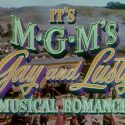
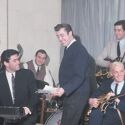
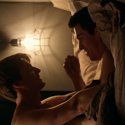
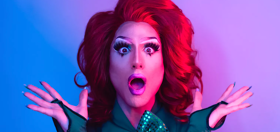



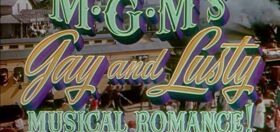
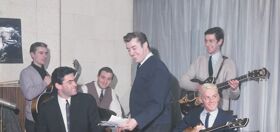





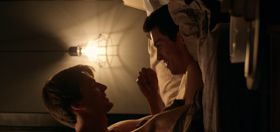

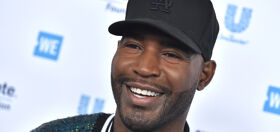
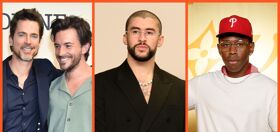
M Shane
While I haven’t seen any signs of any resurgence of the sort of conceptual art which gave so many gay artists a place in the aesthetic and intellectual culture of our age, we can always hope.
The magic of Warhol, Raushenberg, Pollock , Arbus etc. may never reemerge, since our culture at large has become so dumbed out and really mindless, it is nice to see some young gay people in the area of promotion even if they don’t have vision.
I think that many people see this tendancy towards decorative “art” as a sign of a general cultural degeneration like happened at the end of Rome.
I try to think that we are still capable of a kind of rebirth, if the political scene ever has revived hope. I think that we have to see athe current situation as a kind of enuei related to the terrors of our barbarous militaristic society.
Art deteriorates kind of like it did with Hitler.
I always hope that even in the worst of times a human spirit will arise out of the corruption . I find it helpful to realize that a coup has taken place and that our society is in it’s death throws, but that the human spirit can arise.
these ‘futuristic” movies like even Star Wars, can help us understand that we can revive something from the ashes.
Charley
It takes alot of drive, dedication and focus to be a gallery owner. And connections, like Charlie Cowles. His mother Fleur Cowles was a pioneer in modern art, and published a great magazine in Paris during the 1950’s. It’s a business. The gallery owner has to sell the idea that his artists are the next big thing that museums and big collectors should buy them. Gay art has never gotten it’s feet, although the critic for the New York Times is doing his part. Although being in a museum’s collection does not mean your work is going to fetch high prices like Warhol. My friend, the late ,Alex Liberman is in every museum in the world, yet his sculpture doesn’t bring high prices, certainly not compared to Calder or Warhol. Andy was unique, a visionary and captured the 60’s. Peter Max can’t compete.
Insideguy
Being someone who is venturing into more and more gay art, I am glad to see more and more artists geting the space the deserve in both galleries and the art press. It allows mw to re-evaluate Fairfield Porter, Thomas Eakins, John Singer Sargent, Larry Rivers, Robert Rauschenberg and Andy Warhol in a whole new light.
I will definitely be stopping by Mr.Christie’s gallery when I am next in New York.
queerunity
Are these gay artists just artists who happen to be gay or is there work expressly gay?
http://www.queersunited.blogspot.com
Charley
Keith Haring was the first explict gay artist that reached the International market and brings huge prices at auction. I owned a Keith Haring, I bought at an LA charity AIDS auction, and later sold it. It was one of his dancing figures with a hard on. It didn’t bring as much as his other dancing figures, because of the explicit pornographic subject matter. In conceptual art that they youth is leaning towards, is basically anti-merchandising, in that it expresses political ideas and ideals, a form of social sculpture. There is little for sale to hang on the walls, as in Joseph Beuys, artist and founder of the Green Party, but the galleries manage to get a few scraps to sell to important International dealers.
Many dealers are very wealthy, inherited money, and being a gallery or art magazine owner is something they like doing. Also, in the case of gay man Charles Cowles, it gives them a venue to meet attractive gay men, the subject featured in this interview. Like Hollywood, the art world has a casting couch.
manohman
glad to see warhol’s ability to exploit everyone around him for material gain while being catastrophically uncomfortable in his own skin has been passed down to another generation of money grubbers. cheers to the nyc queer!
Insideguy
My my do I feel a daub of bitterness, mixed with jealousy, and envy. he’s cute, young, succsessful, and worst of all self-made by his ability to make connections. You go Mr. Christie, you some day may own your own auction house, and then these guys can really bitch.
M Shane
Queerunity: regarding yourquestion about “gay art “,just onb the surface, it stricks me that there are various things which can be “gay” (1) art which has subject matter that is homoerotic ,e.g. Mapelthorpe (2) art in which the subject matter is clearly of attactive naked males which becomes”gay”, because of the tradition of using females as subjects. e.g. St. Sebastian, or Dying Gaul. (not specifically homoerotic). Keith Haring is a modern example, of modern art of this type.
(3) there is a whole, to me, the most intriging,
set of images, which have, as a basis the conceptual position of looking from the outside, in epitomised by(3a) Camp-(susan Sontag describes) making jest of serious icons.or(3b) taking banal images e.g. Camble soup cans(Warhol) and presenting them in a different context-as art., not advertizing. I think that the former-camp- is a little more related to gay sensability. As a marginalized group-outside of the norm- changing the context of things for the sake of humor or contemplation(the later).
This is a lot more complex a topic andthere are books relating to it specifically. Good question though, mainly because art was a vehicle of gay identity, which has become a more banal matter of late.